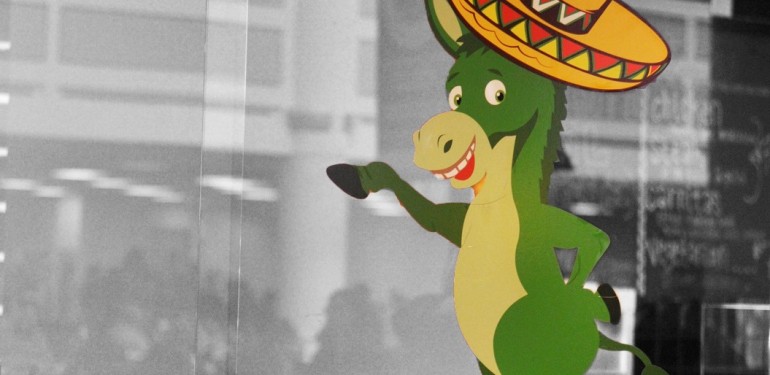The donkey logo at Jorge’s restaurant in the Johnson Center has now been removed but Mason’s Dining Services say the change was not brought about by student concerns over the past few weeks.
“I did not receive any direct feedback on the restaurant,” said Mark Kraner, executive director for retail operations with Dining Services. “But [we] did hear that there were people that felt it was insensitive. We revisited the logo and chose to remove it.”
Kraner said that, besides the donkey, nothing else has changed with Jorge’s.
“I do not think anything changed,” Kraner said. “We have a restaurant that has a focus of Hispanic food.”
Students have raised concerns over the past few weeks, claiming that the donkey was insensitive to Hispanic culture.
“I think that having it taken down was a good move on dining’s part, since it shouldn’t have really been there in the first place,” said Effie Anayiotos, a freshman communications major, who noted that Jorge’s could have been decorated in a variety of other ways.
To some people, the donkey is a symbol representing Mexican culture, but in other countries it means something completely different.
Ariana Tayebi, a business and global affairs who is also half Moroccan and half Iranian, said that, in Morocco, the donkey is a form of transportation so she was misled.
“It was very strange and once I was informed about what it was intended for I thought it was offensive for the Hispanic culture, even if I’m not a part of it,” Tayebi said.
Kraner said that the dining team has not established a new logo for the restaurant and the concept is just a place holder until the renovation of the JC starts in June 2017.
“I believe that when Mason opened up Jorge’s it completely exploited a massive student population,” said Ana Tobar, a sophomore student of Hispanic dissent. ” As a Hispanic student, I thought it was just offensive, and so did many of my peers. It was purely built on stereotypes of Mexican culture and it does not accurately represent Mexican culture in any shape or form. I know cultural appropriation exists, but it shouldn’t exist on such a grand scale as Mason’s administrative level.”



